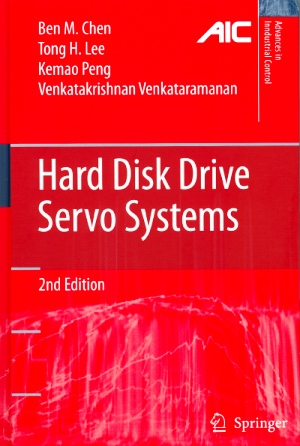Composite Nonlinear Feedback Control Toolkit
Guoyang Cheng, Ben M. Chen, Kemao Peng,
Tong H. Lee
The
CNF Control Toolkit is
developed under MATLAB (6.5 and above) with SIMULINK. It fully utilizes the GUI resources of MATLAB and provides a user-friendly graphical
interface. It can be utilized to design a fast and smooth tracking controller
for a class of linear and nonlinear systems with actuator and other
nonlinearities as well as with external disturbances. The composite nonlinear
feedback control for general SISO linear systems without disturbances
and with disturbances
introduced recently in the literature consists of a linear feedback law and a
nonlinear feedback law. A more complete treatment of the subject can be found
in the 2nd Edition of a Springer monograph, Hard Disk Drive Servo Systems.
The linear feedback part is designed to yield a closed-loop system with a small
damping ratio for a quick response, while the nonlinear feedback part is used
to increase the damping ratio of the closed-loop system as the system output
approaches the target reference to reduce the overshoot caused by the linear
part. A nonlinearity pre-compensation will be implemented if there are plant
nonlinearities that can be canceled using certain
output feedback. If the given plant is noisy and/or has high frequency resonance
modes, a low-pass or a notch filter can also be added to yield a good
performance. An integrator can also be added to the overall controller design
if there are external disturbances. The toolkit is capable of displaying both
time-domain and frequency-domain responses on its main panel, and generating
three different types of control laws, namely, the state feedback, the full
order measurement feedback and the reduced order measurement feedback
controllers.
The main
interface of the toolkit consists of three panels:
- Main Panel: The simulation panel
is the main portion of the CNF control toolkit. Users can specify
directly on the panel the simulation parameters, such as the set point
for the target reference, the duration of simulation and the sampling
period. Users can also define the tracking performance indicator and
obtain the result for settling time and steady state bias of the
controlled output response. We have also implemented the following commands
and functions on the simulation panel for saving and loading data as well
as for evaluating the frequency domain properties of the overall control
system. There are two windows in the simulation panel for displaying the system controlled output response and the control
input signal, together with a block diagram showing the structure of the
overall control system. Using the right button of the computer mouse to
click on the window displaying the output response and control signal,
users will be prompted by a small text window showing options to re-draw
the plots on a new pop-out window or export the simulation data to the MATLAB workspace.
- Plant Model Setup Panel: A setup
panel for entering system data will be opened when the box labeled PLANT
in the main simulation panel has been activated. In addition to the state
space model of the given plant specified, the toolkit allows users to
specify resonant modes of the plant as well on this panel. We note that
high frequency resonant modes are existing almost in all physical
systems. Because of the complexity of resonant modes, they are generally
ignored or simplified in the controller design stage. However, they
should be and have to be included in the simulation and evaluation of the
overall control system design.
- Controller Setup Panel: As the
core of this toolkit, the CNF controller design is to be proceeded in a
configurable and convenient fashion. A controller setup panel will be
opened when the user has activated the box marked with CONTROLLER in the main simulation panel.
This panel carries a block diagram for an adjustable controller
configuration, which will automatically refresh if the user has made any
change or re-selection on the controller structure. Users need to decide
a controller structure first before proceeding to specify the
corresponding controller parameters.
The detailed description on the usage of the
toolkit together with few sample design examples including two benchmark
problems (one on an RTAC nonlinear system and the other on an HDD servo
system). Interested readers might register your contact information below:
Interested
readers please send us an email
with (1) your name; (2) email address; (3) institution; and (4) country. A
zipped file, CNFv3.zip, containing all the m-functions of the toolkit
will be sent to your email address. Please note that we might verify your
information first before sending out the package to you. Once again, note that
your information will be added to our database for distribution of future
versions.
The toolkit is free for
use in research work only. Any commercial utilization of the package without
the owners' permission is strictly prohibited.
